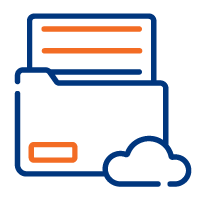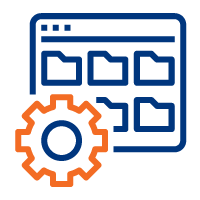How to use semantics and virtualization to future-proof your data management

Data needs context; without it, data is just words and numbers. For data to have value, people need to understand what it represents. People need context. To better understand data, analysts also need to know details about when, where, and how it was collected. In many cases, this can be nuanced and conflicting. Was data collected in Massachusetts or the United States? Was it collected in calendar Q1 or fiscal Q1?
Data semantics provides this context and is an essential component of your data stack. The semantics layer provides a logical view of the data, making it easier for businesspeople to work with it. It translates technical data structure into terminology that business users can understand.
The key components of the semantics layer are the,

Data Catalog
The data catalog is an inventory of an organization’s data assets, describing them so data professionals can easily find what they need.

Data Dictionary
The data dictionary defines the organization's data structure, meaning, and usage of data elements.

Business Glossary
The business glossary defines commonly used business terms, concepts, and rules.
Fragmented Semantics
Because semantics are so important, they live all over the organization. Semantic layers have evolved over the years and have been implemented in various places, each with unique standards. This lack of uniform definitions and context makes it hard for data consumers to access the data they need in a standardized way, creating walls and data silos.
The semantics layer is typically created for the environment in which it will be deployed. While it may be great at serving the purpose for which it was created, semantics fragmentation is a growing chasm that impairs data sharing.
For example, BI tools have unique semantics layers, each with its own data definitions. The typical organization uses almost four different BI tools, making collaboration across departments quite challenging.
Semantic layers are also programmed into very rigid data pipelines, requiring a developer to execute any changes. As pipeline requirements change, programmers, who typically don’t fully understand the context of the data, need to implement updates. Data context often gets distorted in this process, making it increasingly inconsistent with other pipelines and tools.
Data warehouses also have their own semantics layers integrated with the datamarts that sit on top of them. These are typically unique to each data warehouse or the group that maintains the datamart. This fragmentation makes it challenging to share data with colleagues in other departments who may not understand the nuances of the data model.

Organizations have used data lakes to bring data together in one place, making it easier to access. Still, the disparity between data models remains a barrier to data integration and sharing. Even though data may be in the same place in a data lake, without the same data definitions, it isn't easy to compare apples to apples. For example, some data sets may consider a customer an individual compared to others that may categorize a customer as a company. It really depends on the context of how and why the data was collected. Each data set’s semantics must be normalized to analyze shared data properly.
This challenge of managing a fragmented semantics ecosystem will only grow as data gets more critical and the world continues to collect as much as possible.
Tame Fragmentation with Data Virtualization and Universal Semantics Layer
Data virtualization and a universal semantics layer can tame semantics fragmentation and enable greater data sharing and self-service.
A universal semantics layer is a single source of truth that translates data into business terms uniformly. It is platform-independent and not attached to a pipeline, tool, or warehouse but is designed to sit between raw data assets and analytics tools. For universal semantics to work, data virtualization tools must separate the metadata and semantics from the data plane. This approach allows analysts to work with a representation of the data while the original data stays in the source system, and analysts interact with it via a uniform data model. While data remains in place, metadata is consolidated into a single source and organized into a single set of semantics. When a universal semantics layer is enabled by data virtualization, analysts suddenly have a single view of easy-to-understand business data that they can query no matter where it is. This uniformity allows for a single data query to access multiple data stores simultaneously, elevating data discovery to the next level. With the complexity of data storage and the inconsistency of data syntax abstracted away, less technical users can access the data they need without leaning on experts to find the data and explain its meaning.
Data virtualization also eliminates many of the technologies that drive semantics fragmentation. Data can be queried right from the source, so there is less reliance on data pipelines with built-in semantics. By leveraging virtualization and a uniform data model, BI platforms can access data from the source, bypassing native semantics. Datamarts are also no longer required.
When data catalogs, data dictionaries, and business glossaries are consolidated in a single platform, data consumers can discover and access data sets from around the organization. This capability creates many new opportunities to improve data-driven decision-making.
Semantics and the Future of Data management
Unified semantics and virtualized data are critical components of emerging modern data management strategies such as data mesh and data fabrics. These strategies and technologies are connecting the last mile by making data much more accessible to data consumers. They enable new consumption and discovery channels like data products or knowledge graphs.
With a consolidated semantics layer, not only are humans better able to understand all the data in and around their organization, but it also makes it easier for machines. Semantic search capabilities allow you to search data products based on business language and terms. When Gen AI can analyze a single accessible metadata repository, it can learn to retrieve data with simple language commands. Combining this with AI that can automatically create visualizations, the opportunity to reduce tedious analytical work is revolutionary.
Request a Demo TODAY!
Take the leap from data to AI
